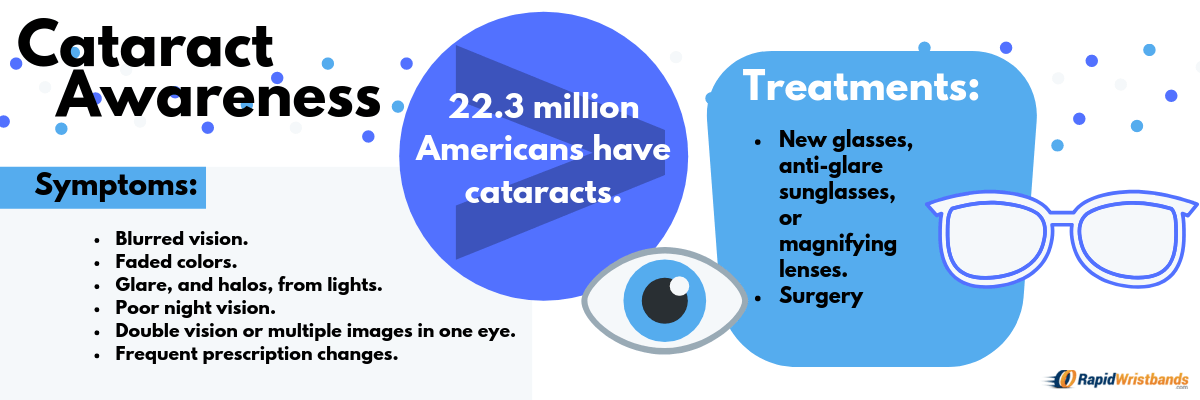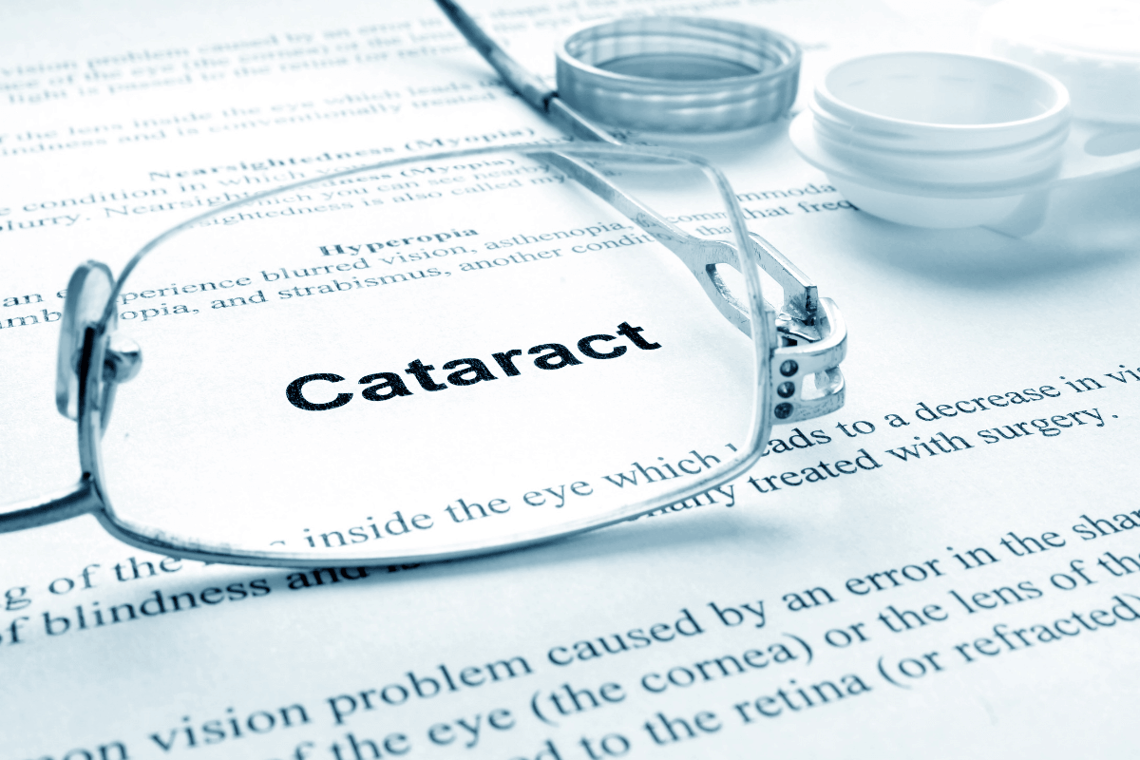
Driving through fog is bad enough, but what if a temporary foggy afternoon becomes your new normal eyesight?
According to the Prevent Blindness Vision Problems in the U.S. report, more than 22.3 million Americans have cataracts.(1)
June is Cataract Awareness Month, and this week we decided to cover the leading cause of blindness in the United States - age-related macular degeneration.
Cataracts are an age-associated diagnosis, and people around the age of 40 can have the disease, but it's usually at 60 years and older when it can impact your day-to-day life.
Like mental health, eye health is essential to your wellbeing. If your vision becomes impacted, it can lead to dire consequences. Read below to find out how you can keep an eye out for cataracts (ha!) and how you can raise awareness.
What Are Cataracts?
A cataract is a clouding of the eye's lens, which blocks or changes the passage of light into the eye.(2) Your vision may look like a rainy windshield or a foggy day. This is a gradual disease, meaning that cataracts won’t affect your eyesight right away. No matter if you're in the early stages with minimal vision loss, it’s important to see your eye doctor right away when the signs become more apparent. It’s best to treat in the early stages of the disease.
How Does It Affect the Eyes?
The eye contains a giant lens, like that of a camera. Light passes through the dilated pupil all the way through the lens to get to the retina in the back of the eye. From there, the eye can send signals to the brain so your mind can formulate what you’re seeing. If the lens is cloudy, or has a cataract, what you see will be blurry.
Common symptoms of cataracts include:(3)
- Blurred vision.
- Faded colors.
- Glare, and halos, from lights.
- Poor night vision.
- Double vision or multiple images in one eye.
- Frequent prescription changes with your glasses or lenses.

Types of Cataracts?
Even though cataracts consist of a generalized cloudiness of the lens, there are several types of kinds that can affect you. The four types of cataracts are secondary, traumatic, congenital, and radiation. (4)
Secondary
Secondary cataracts form as a consequence of something else. For example, these cataracts are common after surgery, specifically for glaucoma, and can result in diabetic patients. Steroids are also a common catalyst to cataracts.
Traumatic
There are some cases where cataracts can form after traumatic events, like an eye injury.
Congenital
These kinds of cataracts aren’t influenced from external reasons, they are born with it. Babies, for example, are born with it or children can develop them throughout their childhood. Fortunately, these cataracts may be small.
Radiation
After being exposed to radiation of some sort, cataracts can appear.

Cataracts can also affect different parts of the eye. It can affect the center, the edges, or the back of the lens.
- Center of the lens can cause nearsightedness or a temporary improvement in your reading vision. But with time, the lens gradually turns yellow and further clouds your vision. It can even turn brown over time. Advanced coloring of the lens can lead to difficulty distinguishing between shades of color. (5)
- Edge of the lens results in whitish, wedge-shaped or opaque streaks that eventually gravitate toward the center of the eye. (6)
- Back of the lens can affect your reading vision, reduces your vision in bright light, and causes glare or halos around lights at night. These types of cataracts tend to progress faster than other types do. (7)
Do I Need Surgery? Other Treatments?
There are many options to help with cataracts. Non-surgical options include new glasses, anti-glare sunglasses, or magnifying lenses. However, if the cataracts prevent you from everyday activities, surgery is highly-recommended. The good thing is that cataracts aren’t necessarily life-threatening, so if you can’t do the surgery right away, there’s no hurry. It’s only if it’s preventing another eye treatment should surgery be sooner rather than later.
Prevention?
The best way to prevent cataracts is to detect them before it’s too late. Consistently going to eye exams will help determine if you have cataracts or not. Wearing hats, sunglasses, and other objects to help shield your eyes can make an impact. It wouldn’t hurt to eat your leafy greens and carrots, either.
How Do I Raise Awareness?
Raising awareness for cataracts can range from social media all the way up to joining an organization. No matter what you do, it’s important to show your support for those with cataracts and to help others with vision loss.
Social Media
At Rapid Wristbands, we are big proponents of sharing a message. This is why we believe that social media is one of the best ways to spread the word on a global scale. Using hashtags, sharing photos, even responding to a quick tweet can help progress awareness. Websites like Facebook, Twitter, and Instagram are common platforms people use for causes like this.
Join an Organization
Joining an organization is a great way you can help raise awareness. They always need volunteers and donations, and you can make the time or money you have to give go as far as possible, while helping as many people as possible.
Cataract organizations, and other vision-related groups, include:(8)
- Unite for Sight
- Helen Keller International
- Volunteer Eye Surgeons International
- World Health Organization Prevention of Blindness Deafness
Don’t hesitate to reach out if you’re thinking about joining an organization.
Educate Others
You can also educate the community around you. Take time to educate people about the importance of eye health, and the necessity of regular checkups.

Order a Wristband
At Rapid Wristbands, you have the ability to create wristbands with a message. You can order custom wristbands featuring a message on cataract awareness anytime you’d like. Just click the button below to order your wristband today!
Final Thoughts
Although cataracts aren't considered serious, they aren't to be taken lightly. By 2050, the number of people in the U.S. with cataracts is expected to double from 24.4 million (in 2010) to about 50 million.(9) Let's keep the conversation going so everyone knows what to do if they start losing their vision due to cataracts.
Resources:
.png)
.png)
.png)


.png)
.png)

.png)
.png)
.png)
.png)
.png)
.png)
.png)
.png)
.png)
.png)
.png)
